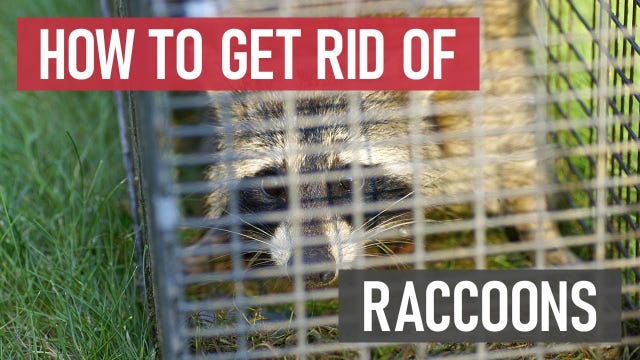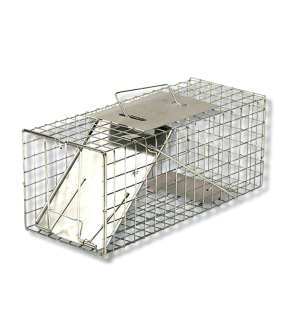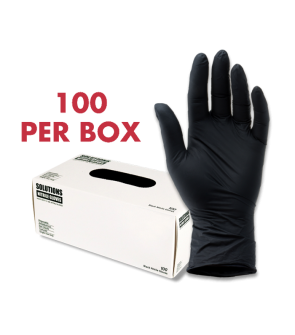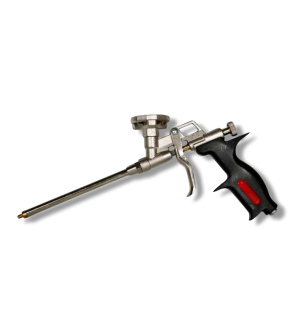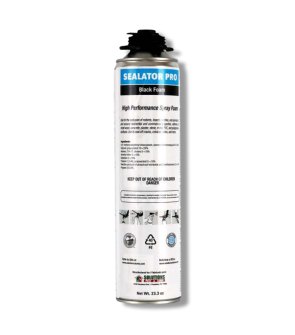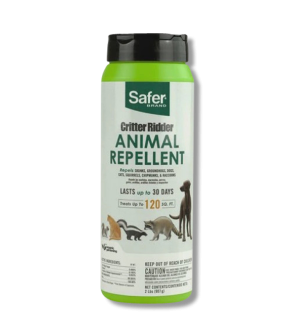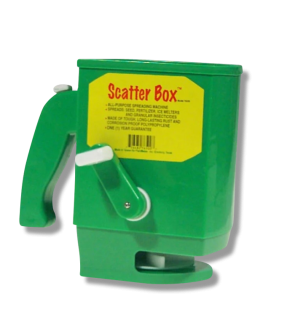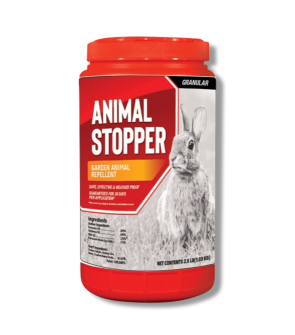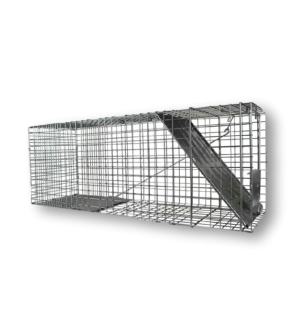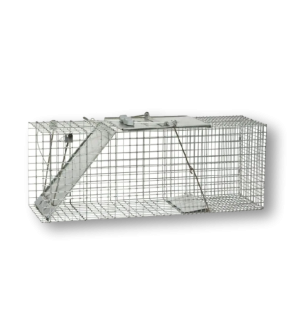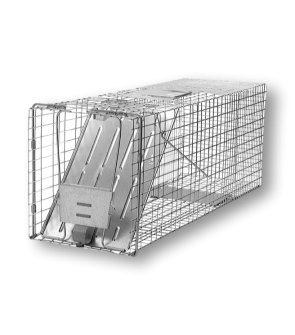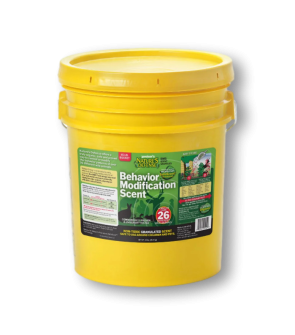Gain access to personalized product screening, the best pricing, rewards, and more!
Most Effective Products
Raccoon Control: How to Get Rid of Raccoons
This article contains information and suggestions to help decrease the presence of raccoons within your property. By following these methods and using the recommended products, you can get control of your raccoon problem. While following these guidelines, Local and State Laws are still present and must be followed. It is recommended that the homeowner visit their local animal control office or state website to visit the proper rules and regulations associated with the control of raccoons.
While the common pests that homeowners usually deal with during the times of the year when it’s starting to get cooler are rats and mice, another common nuisance that should not be overlooked during fall or winter time is wildlife like the raccoon.
More commonly found in woodsy regions in the Eastern United States, a raccoon problem can creep up anywhere in the country and if you happen to have one decide to hang around your neighborhood, you may be in for a lot of destruction.
There is a reason raccoons are considered wildlife, they can get pretty wild around the home and can give homeowners fits by knocking over trash cans, eating bird feed, and scratching and clawing all over the place in search of food. They have been known to damage gardens and tear off shingles and boards in their attempt to get into crawl spaces in homes, finding their way into attics, basements, and garages.
If you want to know how to get raccoons off of your property, follow our DIY guide for product recommendations and instructions that will get rid of the raccoon problem quickly.
Identification
Before considering a treatment approach, you need to make sure that the wild animal lurking on your property is a raccoon. This will ensure that you are using the correct bait and strategies.

- An adult raccoon typically stands 12 inches tall and is 24 to 38 inches long, including its bushy tail. Generally, the size of a small dog.
- They have gray to brown fur, a ring-striped tail, slightly rounded ears bordered with white fur and a long pointed snout, and short legs. One of their most distinctive features is their black mask of fur around their eyes which resembles a mask.
- Their black paws resemble human hands due to their slenderness and 5 fingers on each hand and foot. Each of its five toes bears a short, curved claw. These toes enable them to grab, climb, swim, and pull things easily.
Use the image and description above to confirm that you are dealing with a raccoon on your property. If you are not totally sure, contact us and one of our pros will assist you with proper identification.
Inspection
Once you have confirmed that your pest animal is a raccoon, it is helpful to perform an inspection to note the areas where it is most active. This will help you determine where to focus your treatment efforts.

Where to Inspect
Raccoons are most likely in your attic looking for food, shelter, or both. If you have any clutter or storage bins in your attic, they are most likely burrowing in these particular spots.
Raccoons may also be in basements or garages where trash is stored, as well as areas with clutter or pet food will most likely be spots where raccoons are most active. Search the corners and crevices as well.
Outdoors they may be around gardens, dumpsters, or trash bins rummaging for food. They may create their dens in trees, unoccupied campers or trailers, brush piles, chimneys, sheds, riverbanks, rock crevices, hollow logs, barns, sewers, and other abandoned animal burrows.
The distance from the animal's nesting site is not usually more than 1 mile, but the raccoon can scavenge as far as 10 miles within their territory for food and breeding.
What to Look For
Because raccoons are nocturnal animals, any damage will be done at night. There are certain signs that signal raccoon activity, such as trash cans that are pushed over, damaged gardens, tracks, chew marks, and droppings.
These tracks will look like tiny hands. If it's their front paws it will be 1.5 to 3.2 inches long and 1.4 to 2.9 inches wide.
Be sure to scan boxes and electric wires for gnaw marks or damage. You will also want to search for damaged shingles, as well as damaged electrical wiring and piping.
Look for tracks in sand, mud, dust, or other surfaces. Both the forepaws and hind paws feature five digits, and the hind paws have elongated heels. The forepaws are typically 1 to 2.5 inches in width and length, and the hind paws can be up to 4 inches long.
Raccoons dropping will resemble a small dog, usually tubular in shape, have rounded or blunted ends, and are typically dark in color. The biggest difference between a dog's and a raccoon's feces is that raccoons will contain seeds, berries, nuts, and fur.
Listen for hisses, whistles, screams, chittering, growls, a loud purr, and snarls which may sound like a barn owl. A baby raccoon will create mewing, whining, and crying noises resembling a baby bird.
Other signs of activity you should look for include latrine sites. Raccoons create waste in consistent spots.
Outdoors, these spots are at the bases of trees or on raised areas like stumps or large rocks. On a residential yard, these sites can also appear on wood piles, under decks, or along fences. If you’ve found a latrine site, know that a raccoon nest is nearby.
Treatment
Now that you have identified your pest animal as a raccoon and you have noted areas where it is most active, you can proceed with a treatment. The best option for raccoon control is trapping. Use the Solutions Humane Live Trap in strategic areas to try and lure the Raccoon to the trap.
Be sure to wear gloves when handling the trap to prevent leaving your scent. If a raccoon picks up a human scent on the trap, it will avoid the trap, which will make it ineffective.
Step 1: Remove Food and Hiding Sources
Raccoons are omnivorous, which means they are capable of eating both plant and animal matter. In short, there isn't much this animal won't eat.
Common foods this animal may eat are nuts, berries, fruit, seeds, insects, fish, frogs, turtles, bird eggs, birds, corn, crayfish, dead animals, crops, pet food, animals (those that are smaller than them like mice, voles, shrews, and rabbits), and other items found in your garbage.
By addressing these conditions you can deter the raccoon from visiting your property and increase the likelihood of it visiting your traps.
Any food left out will compete with any bait you may be using.
First, if you can avoid it do not feed your pets outside. Any leftover pet food will need to be disposed of in a trash can with a lid. Stored food items, including those for pets, should be kept in a sealable plastic container.
Not to mention bird feeders in your yard should be filled with enough seed for the day for birds to eat. Any spilled seed should be cleaned up.
These pet food bowels along with bird feeders are especially attractive to raccoons. Do not leave pet food or bird seed out overnight.
The aroma from the trash in your garbage can will attract these animals to your property. Be sure the trash cans have a lid and secure the lids with cinder blocks or bungee cords so the animal cannot enter.
Raccoons will forage for food and rest just about anywhere so having plenty of vegetation and clutter in and around your home isn't helpful.
Prune away vegetation outside of your home that has overgrown foliage and branches which may help them climb into unwanted areas. Remove brush and keep the grass mowed to help eliminate their hiding spots.
Consider fencing away any fruit or vegetable plants. Raccoons are capable climbers, so you may want a complete enclosure.
Cover any ponds or pools, and dump any objects collecting water as raccoons dump their food into the water. They do this to help feel the item they are eating better and see if there is anything in it the raccoon may not want to eat.
Indoors, clean up any clutter and pull items away from the wall to help limit hiding spots. Remove cardboard boxes and replace them with a sealable plastic container to help deter these pests.
Step 2: Place the Trap
Once your property has been cleaned, set up a Solutions Humane Live Animal Trap. This weather-resistant metal box trap provides a safe and humane alternative to lethal animal control products. When activated, this live trap shuts quickly and tightly, ensuring no harm comes to the animal.
For the best success rate, proper placement is key. The most effective spot for your live trap is where you’ve seen animal activity. It’s important this spot is also in regular shade or not in constant sunlight, as an animal can die from overexposure if left in the sun too long without a way to escape.
Place your trap along the edge of your property, or close to any food or water sources away from human or pet activity. Physical boundaries like fence lines and garden edging make great placement guides, so place your live trap in these areas lengthwise against the perimeter.
Inside structures like in an attic or basement, set the trap against the wall close to raccoon activity. Indoors or outdoors, we recommend you place a weight on top of the trap to hold it in place and stop animals or weather from knocking it over.
Step 3: Bait and Set the Trap
Once you are satisfied with where you have placed the trap, you can then bait it. When baiting your trap, it's important to place the bait at the far end of the trap behind the trigger plate so that when the Raccoon goes to feed on the bait, it is more likely to trigger the trap.
Open the trap and set bait behind the trap’s pressure plate in a manner that is inaccessible to animals unless they come inside the trap. Hold the door open, and pull the metal arm forward so it catches the door and prevents it from closing.
Step 4: Monitor the Trap and Relocate the Raccoon when Caught
It may take some time for the raccoon to be caught so monitor the trap twice a day until the raccoon has been caught. When checking, you may need to refill with more bait if they were able to get in and consume the bait without triggering the trap.
Once you have captured the raccoon in your live trap, cover the trap with a towel to keep the animal calm.
Raccoons can be particularly aggressive wild animals. Take caution when approaching or handling this animal.
In states where animal relocation is prohibited, immediately contact animal control for further instructions.
In a state where you are able to transport wild animals, do not leave an animal trapped for more than 24 hours.
Travel to your release location, place the trap on the ground facing away from you, and open the trap to release the animal.
The trap’s solid door will protect you from contact with the animal. Always consult animal control for local laws regarding proper animal relocation.
Prevention
Once the raccoon has been caught you want to make sure they dont make a return. Here are some preventative measures we suggest which will reduce the chances of a raccoon reinvasion.
- Ensure no more food is accessible outdoors. Double-check trash bins to make sure they seal properly and avoid feeding pets outside.
- Remove all clutter and debris from your property, since raccoons may be drawn to nest and burrow in these areas. Any potential food or water sources, especially pet food, should be properly sealed in a container and stored indoors.
- If your property is near a wooded area and you have no fencing, you may be susceptible to having raccoons and other wild animals invade your property. Consider blocking off your property with some fencing.
- If raccoons have nested inside structures, check the foundation and roof for possible entry points. Large openings and ventilation may need to be reinforced with heavy-duty wire mesh. Other voids may need to be filled with the Solutions Sealator Pro Black Foam or caulk.
- To deter raccoons from your plants we suggest using a repellent like the Animal Stopper Granular Repellent. This is a humane granular product that uses natural ingredients to repel animals such as raccoons. Shake the product container well before using it. Flip up the tab on the container to open, and, while gripping the handle, shake side to side to release the granules. Apply Animal Stopper Granular Repellent liberally to dens, tunnels, entries, and around plants that need protection. When using near edible crops, apply a perimeter application. This means the product cannot touch the base or any part of the plant itself. Repeat application as needed, usually every 30 days.
Key Takeaways
What are Raccoons?
- Raccoons are nocturnal animals that have gray fur, striped tails, and black markings on their faces that resemble a mask. They are most likely invading your attic looking for food, shelter, or both.
How To Get Rid of Raccoons From Your Property
- The best way to get rid of raccoons is to use a live trap like the Solutions Humane Live Trap. Bait the trap with some enticing food and set the trap strategically in an area where you have observed raccoon activity. Check the trap once in the morning and once in the evening. Once a raccoon is caught, check with your local authorities to make sure you safely and correctly release it.
Preventing Raccoon Reinfestation
- Prevent raccoons from entering your attic again by removing any potential food sources and trash, as well as sealing any cracks and crevices with caulk, heavy-duty wire mesh, or the Solutions Sealator Pro Black Foam. Deter raccoons from visiting your yard by applying Animal Stopper Granular Repellent.






